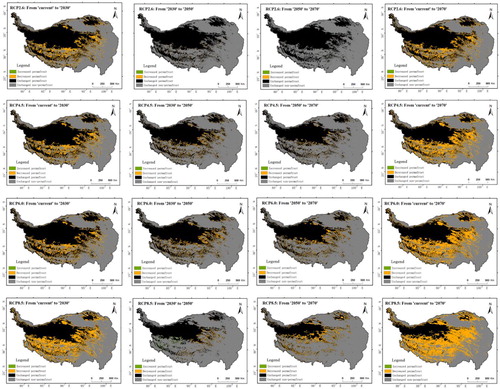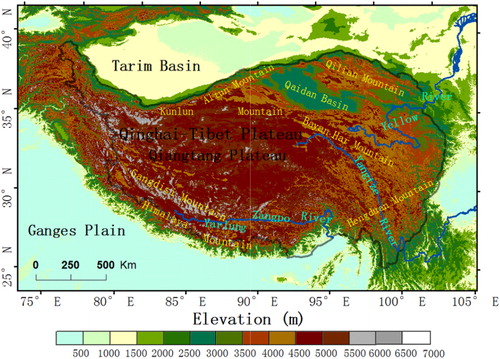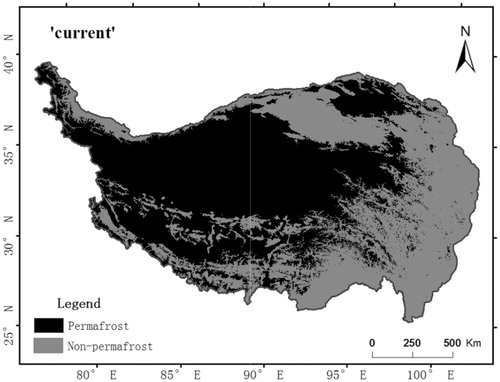Figures & data
Table 1. Temperature data (°C) for the QTP for four different IPCC5 RCPs.
Table 2. Total areas of permafrost on the QTP for each period for the four RCPs (×106 km2).
Table 3. The rate of permafrost degradation on the QTP during each period for the four RCPs (%). ‘+’ indicates permafrost degradation; ‘–’ indicates permafrost increase.
Table 4. The areas (×103 km2) of future permafrost changes for the four RCPs on the QTP.



